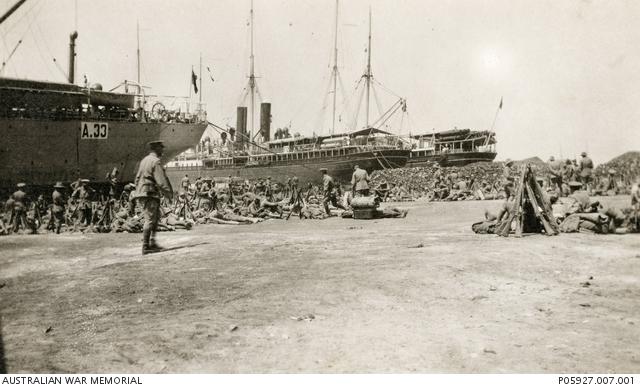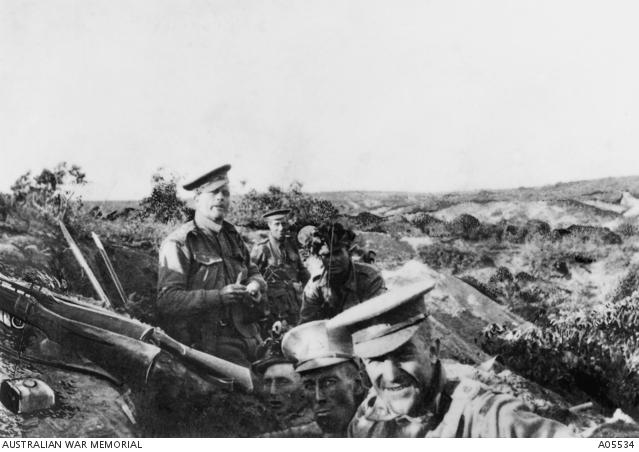'A priceless treasure'

It’s one of the first things visitors to the Australian War Memorial see: a bullet-riddled, steel lifeboat that carried troops of the 13th Battalion ashore during the Gallipoli landings more than 100 years ago.
The landing boat was found abandoned on the beach – its hull peppered with holes, the result of stray shots and shell-fire – when Australia’s official historian Charles Bean returned to Turkey in 1919.
Today, the lifeboat is one of the Memorial’s most precious artefacts, a powerful reminder of Australia's first major action of the Great War.
The Memorial’s Head of Military Heraldry and Technology Nick Fletcher said the lifeboat and the story behind it had a profound impact on visitors.
“The boat is a witness to that day and to the landings,” he said. “It is one of the founding items of the Memorial and one of our most priceless treasures.
“It lay on that beach for the remainder of the campaign and was shelled everyday by the Turks, but it speaks to people who look at the holes in the metal and imagine the fragility of the men inside the boat.”

A view looking aft of lifeboat carrying unidentified men of the Australian 1st Divisional Signal Company as they are towed towards Anzac Cove at 6 am on the day of the landing.
The lifeboat was the No. 6 lifeboat from HMT Ascot, which transported troops of the Australian and New Zealand Army Corps from Egypt to Turkey.
“The Ascot wasn’t a popular troopship,” Fletcher said. “The troops called it a ‘rotten tub … absolutely the dirtiest thing afloat,’ which probably reflects the fact that a lot of the ships had been used to transport horses before they picked up men for Gallipoli ...
“It was a hardworking merchant ship and perhaps not the nicest one anyone had ever been on.”
After the Ascot arrived, the men transferred to the torpedo boat destroyer HMS Chelmer, which took them towards the cove with the Ascot’s lifeboats in tow. The men then clambered down into the lifeboats to be rowed the final distance to the beach. Once ashore, the battalion went straight into the front line to take up positions in Monash Valley, Quinn’s Post, and Pope’s Hill.

Troops on the deck of HMT Ascot (A33) watching the bombardment whilst being transported to Anzac Cove on 25 April 1915.

Units at Alexandria on 12 April 1915 awaiting embarkation for the Gallipoli Peninsula. HMT Ascot (A33) is clearly visible on the far left of the photograph.
“By the time the 13th Battalion takes part in the landings later in the day on the 25th, men were under fire, and there was an eagerness to be part of what was going on,” Fletcher said.
“They had been standing on their troopship during the morning and were wondering why they weren’t involved.
“The knowledge that their comrades – men that they had known in Egypt – were actually fighting within sight of them spurred them on, and they wanted to get ashore and become a part of it as quickly as they could.
“It was quite different to the experience of the men who landed before dawn.
“There are quite a few accounts of the nerves these men felt as they travelled through the darkness – how quiet it was; how calm the sea was; and how there was a lack of conversation with everybody lost in their own thoughts about what they were going to face when they made it ashore because very few of them had been in combat before, and none of them had ever made a landing on a foreign shore like this.”


Members of 13th Battalion occupying Quinn's Post on the heights above Anzac Cove.
When the Ascot left Gallipoli a few days later, filled with wounded soldiers, it left behind three of its lifeboats, including No. 6.
“We don’t really know why it never made it back to the Ascot,” Fletcher said.
“It may have been damaged while taking part in the landings, but it’s quite likely the crew supporting the troops were wounded and evacuated on other boats.
“There are also stories that some of the crew who were involved in the landings were so keen to get involved in the fighting that they deserted the boats and went off with the troops.”
The lifeboat lay on the beach at Anzac Cove throughout the campaign, and was discovered by the Australian Historical Mission to Gallipoli in 1919. It remained there until 1921, when it was finally shipped to Australia, having been earmarked for the Memorial’s collection by Charles Bean in 1919.
“If you look at photos from the period, the place is absolutely littered with relics and debris from the fighting,” Fletcher said.
“At that stage, it was something like a ghost town, and Bean quickly identified the lifeboat as something which was crucial to the National Collection, and something he wanted to acquire as soon as he could.


Gallipoli, Turkey. 1919. One of the original boats used by Australian troops in the landing at Anzac Cove lying battered and rusty on the beach four years later.
“It was a bit of a labour of love. They could see the significance of it, and they went to a lot of trouble to make sure these items were sent back safely to Australia.
“Looking at the boat, you can still see there is a seam running right around the middle of the hull.
“It was too large to fit around the tight curves of the road along the coast so they had to cut the boat in half and then reassemble it here in Australia.”
The timber sections of the boat were missing and had to be reconstructed in the 1920s.
“When they got it back to Australia, it was still just an empty steel hull,” Fletcher said.
“Gallipoli was very, very cold in winter and the Turks who were left there on the garrison weren’t given much support. They stripped every piece of timber they could find for firewood and were burning everything they could get their hands on to try and keep warm, so when we received the hull it was just that, a hull with nothing in it.
“It was not in terrific condition – it had been lying in salt water for a long time and was sagging a fair bit – so quite a lot of work went into stabilising it and making it fit for display.
“It is one of our national treasures, and has pretty much been on display ever since.”